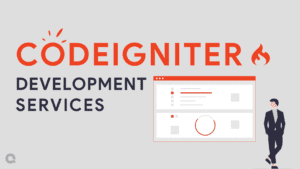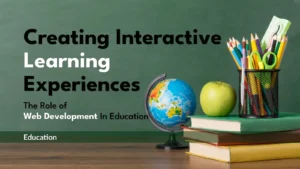Why Design-First Startups Win: The UX/UI Playbook Every Founder Needs

Imagine this: your product is solid, your code is clean… but your users bounce faster than they arrive.
That’s not a tech problem. That’s a design-first problem.
In today’s startup race, users don’t give second chances. If your product doesn’t “feel right” from the first tap, they’re gone. What separates winning startups from the rest isn’t just innovation — it’s experience.
This isn’t a design lecture. It’s a founder’s guide — built for the ones juggling wireframes, sprints, and investor calls. You’ll get a lean, no-fluff UX playbook designed to help you launch smarter, retain longer, and convert faster.
Let’s dig in.
What Design-First Really Means (And Why Founders Should Care)
Here’s the thing: “design” isn’t decoration — it’s direction.
Startups that lead with UX think like users. They strip complexity. They reduce cognitive load. They design with empathy before they even write a single line of code.
Notion nailed this. It wasn’t just a note-taking app — it felt like one tool for your brain.
Stripe? It made payments feel invisible.
Airbnb? Their first UX win wasn’t software — it was hiring photographers to upgrade listings. That one move doubled bookings.
Design-first founders don’t obsess over color palettes. They obsess over clarity, friction, and flow. That’s the real importance of UX design — it’s your product’s invisible growth engine.
The High Cost of Bad UX (And Why You Should Fix It Early)
Let’s not sugarcoat it: bad UX is expensive.
It’s the reason behind:
- Your rising churn rate 📉
- That silent drop-off after sign-up 😶
- The frustrated DMs you keep getting from early adopters 😤
“One confusing screen is all it takes to lose a paying user.” — a founder we worked with (the hard way)
Bounce rates above 50%? A red flag.
Support tickets about “not knowing where to click”? You’re bleeding trust.
A buried CTA? That’s just money left on the table.
Whether you’re selling a SaaS tool or building the next marketplace, enhancing user experience isn’t optional — it’s survival. The earlier you address it, the fewer redesign regrets you’ll face post-launch.
Lean UX for Startups: The 5-Step Process to Launch Fast & Right
You don’t need a design degree to build a solid MVP. You need a simple UX loop you can repeat weekly:
- Talk to Users (Fast) Skip the docs — jump on a 15-min call. Ask what’s hard. Listen.
- Write One Hypothesis Example: “Making the signup button bigger will boost click-through by 15%.”
- Sketch It Out Figma, paper napkins, Miro boards — whatever gets ideas out of your head.
- Test It Ugly Share your rough version with 3 users. Watch their clicks. Note the confusion.
- Fix, Ship, Repeat Don’t wait for “perfect”. Ship updates weekly. UX is a verb, not a file.
🎥 Must-Watch: Understand Lean UX in Just 4 Minutes
This video breaks down the concept of Lean UX and debunks 3 common myths — all in under 4 minutes. 👇
📌 Video credit: NNgroup on YouTube. Used here for educational context.
This is the heart of lean UX design — low-cost, high-feedback, momentum-friendly.
UX Research Methods Every Founder Should Know (and Use)
You don’t need a PhD to do UX research. Founders just need curiosity, humility, and a bias for talking to real people.

Some of the best insights come from:
- Usability Tests (Maze, Lookback) — 5 users, 15 minutes each.
- Surveys & Interviews — Ask real questions. Record. Repeat.
- 5-Second Test — Show a design briefly and ask, “What do you remember?”
- Heatmaps — See where users click and rage-quit.
- Tree Testing & Card Sorting — Let users organize your IA, not your assumptions.
- Guerrilla Testing — Show a friend, a stranger, your delivery guy. Watch where they struggle.
Even one or two of these UX research methods can uncover friction that a thousand lines of code never would.
The Design Playbook: What Really Moves the Metrics
Design isn’t just art — it’s science. These battle-tested principles are behind the best converting apps out there:
- Fitts’ Law: Larger, closer buttons = faster actions
- Hick’s Law: Too many choices = slower decisions
- Visual Hierarchy: Make primary actions pop
- Jakob’s Law: Users love what they already know
- Microcopy: Copy that speaks human
- Accessibility: Bigger fonts, better contrast = more reach
One of our clients saw a 22% drop in checkout abandonment — just by following Hick’s Law.
That’s the ROI of good user experience design — small fixes, compounding impact.
Founder’s Toolkit: Tools and Team Structure That Scale
You don’t need 50 SaaS tools. You need a focused, founder-friendly toolkit:
- Figma — For fast, collaborative prototyping
- Maze — For testing designs remotely
- Notion / Trello — For research notes, design tasks
- Hotjar — Heatmaps + session replays
- Google Analytics — What users do (not just what they say)
- Loom — Record and share async UX feedback
As your product grows, so should your team structure. Start lean, but aim to hire or partner with a UX-focused dev team like QalbIT.
UX Metrics That Prove ROI (And Impress Investors)
Design-first founders track what matters:
- NPS (Net Promoter Score) — Loyalty signal
- DAU/MAU — Stickiness index
- Conversion Rate — From visit to value
- Time-on-task — Can users finish quickly?
- Session Length — Are they engaged?
- Support Tickets — Less = better design
One founder we worked with added UX metrics to their pitch deck and secured pre-seed in 3 weeks.
These usability evaluation metrics are more than data. They’re storytelling tools for investors
Habits of Design-First Founders That Lead to Product-Market Fit
Design-first isn’t a phase. It’s a mindset.
Here’s what those founders tend to do:
- Block time weekly for user interviews
- Test features before writing code
- Use a MVP UX checklist to gate every release
- Review funnel metrics with their team
- Lead or participate in monthly design reviews
- Set UX goals like any core KPI
These founder UX guide habits aren’t flashy — but they lead to sticky products and faster product-market fit.
Conclusion
Design-first startups don’t always look the flashiest at launch. But they listen earlier, test quicker, and win customer trust faster.
This playbook isn’t theory. It’s the real-world UX approach we use at QalbIT to help early-stage products find their edge.
Whether you’re building your MVP or scaling post-launch — great UX isn’t a luxury. It’s your differentiator.
Ready to find the UX gaps holding back your product?
👉 Or explore our Custom Software Development Services
👉 Bonus → How Startups Build Smarter in 2025: The Complete Guide to Custom Software Development
Frequently asked questions
Because every $1 invested in UX returns ~$100. It boosts engagement, retention, and conversion.
UX = how it feels. UI = how it looks. You need both, but UX wins trust faster.
Figma, Maze, Notion, and Hotjar. These help you prototype, test, and learn fast.
~10–20% of your dev budget. Even on a tight budget, do testing and MVP prototyping.
Yes — with templates, lean UX methods, and real user feedback. But hire or partner later to scale faster.






